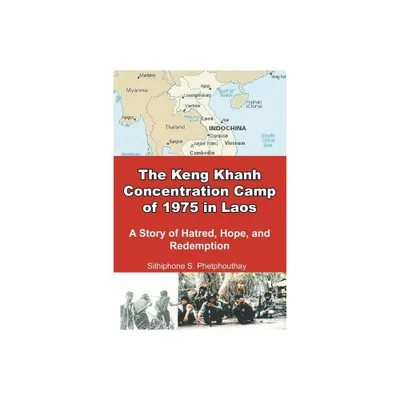Home
Dachau Concentration Camp Memorial Site. Religious Memorials
Loading Inventory...
Barnes and Noble
Dachau Concentration Camp Memorial Site. Religious Memorials
Current price: $9.99


Barnes and Noble
Dachau Concentration Camp Memorial Site. Religious Memorials
Current price: $9.99
Loading Inventory...
Size: OS
*Product Information may vary - to confirm product availability, pricing, and additional information please contact Barnes and Noble
The first complete documentation covering the chapels, churches and convent built on the Dachau Concentration Camp Memorial Site from 1960-1995 and also the Jewish Memorial. These include the Protestant Church of Reconciliation by Helmut Striffler, a major work of postwar architecture in Germany. The work also addresses the problematic planning processes in the first decade after liberation.
Dachau, set up in March 1933 as one of the first permanent concentration camps, is still today a synonym for the inhuman National Socialist machinery of oppression,"a precinct whose soil burns us through the soles of our shoes, even if we have never set foot on it" (Ulrich Conrads).
Shortly after liberation, there were already plans to contain the concentration camp site in a Christian framework by erecting crosses and churches. These plans were based on the experience of the clergymen previously interned in Dachau. Between 1960 and 1967, at the time when the Concentration Camp Memorial Site was being developed, the Catholic Mortal Agony of Christ Chapel, the Jewish Memorial and the internationally famous Protestant Church of Reconciliation were built in a "place of meditation". Later, the Carmelite Convent of the Precious Blood and the Russian Orthodox Resurrection Chapel were added.
The religious memorials on the former Dachau camp site bear witness to a new social departure and to the earnest intention to engage in commemoration. For the first time, this richly illustrated publication presents in one volume both the complex story of their construction and also their works of art. In addition, those who work at Dachau describe the church memorial work on site.
Dachau, set up in March 1933 as one of the first permanent concentration camps, is still today a synonym for the inhuman National Socialist machinery of oppression,"a precinct whose soil burns us through the soles of our shoes, even if we have never set foot on it" (Ulrich Conrads).
Shortly after liberation, there were already plans to contain the concentration camp site in a Christian framework by erecting crosses and churches. These plans were based on the experience of the clergymen previously interned in Dachau. Between 1960 and 1967, at the time when the Concentration Camp Memorial Site was being developed, the Catholic Mortal Agony of Christ Chapel, the Jewish Memorial and the internationally famous Protestant Church of Reconciliation were built in a "place of meditation". Later, the Carmelite Convent of the Precious Blood and the Russian Orthodox Resurrection Chapel were added.
The religious memorials on the former Dachau camp site bear witness to a new social departure and to the earnest intention to engage in commemoration. For the first time, this richly illustrated publication presents in one volume both the complex story of their construction and also their works of art. In addition, those who work at Dachau describe the church memorial work on site.


















